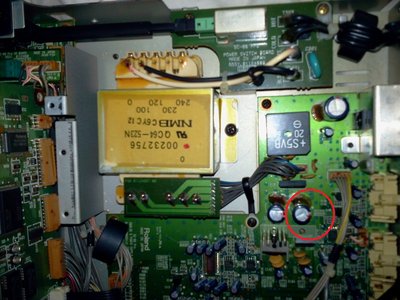First post, by Grub3r
Hi guys and gals.
I have probably fried my 88pro US version.
I got one and I bought a converter from 220-110 to use it in europe.
hooked it up and it worked for 20 min before it began to smoke.
I immediately turned it off, dissasembled and saw that one capacitor had leaked a little and spraying some acid on the pcb above it.
the unit was quite warm in area of the capacitor.
Inspected the unit and could not see any damage neither any bad smell.
I noticed the 100v(soldered) 120v 230v 240v on the transformator.
I also found the thread about convertion of sc-88pro
so the question, did unit collapsed because of the 110v delivered and not the intended 100v?
May the unit have lived on 230(because of the possible faulty converter) for 20 min?
how much damage can it have received? any change that it has survived the accident?
is there any point in soldering over to 230 and trying it again?
attached the picture, the capacitor which leaked is the one marked red.
any help is appreciated.
Thanks.
